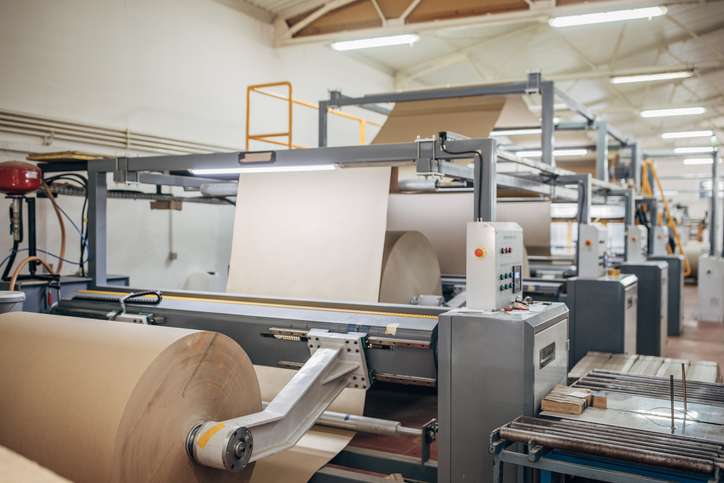Common Pulp & Paper Hand Injuries
The pulp and paper industry is one of the largest industries in the world. The US is the world’s largest producer of pulp and paper and the second largest consumer in 2020. The top five global producers are China, the United States, Japan, Germany, and Canada, respectively.
As one of the world's oldest and largest industries, it is also heavily regulated by OSHA (employee safety), the US EPA (environmental), many state and regional agencies, and regulators across the globe.
The Pulp & Paper industry includes companies that use wood as raw material, producing pulp, paper, paperboard, and other cellulose-based products. Today, there are over 565 pulp & paper manufacturing facilities in the US.

Industry hazards
This industry lends itself to numerous hazards caused by the processes and machinery that result in employee exposures to physical, chemical, thermal, biological, and health injuries and illnesses. With the various body parts and systems that can be impacted, this article will target the most common hand injuries and the protective measures that can prevent them and keep employees safe.
Finger and Hand Hazards
Identifying hazards through an effective risk assessment is always the first step in injury prevention. Look at anyone’s assessment within the Pulp & Paper industry and you will identify similar findings:
- Physical hazards: pinch and nip points, sharp surfaces
- Thermal hazards: hot surfaces, welding flame
- Chemical hazards: handling, splashing of acids, caustics, leaking lines, spills/cleanup
- Biological hazards: bacteria in the raw materials and processing water
- Human hazards: insufficient training, not following prescribed procedures, housekeeping, PPE misuse
Types of hazards
Common preventable finger and hand injuries include:
- Cuts, lacerations, abrasions handling sharps (saw/paper blades, cutters, sharp edges)
- Punctures handling broken wood or metal shards (pallets, processing of wood, grinding/drilling)
- Impacts with sharps, blunt objects, vibrations damaging underlying tissues
- Chemical dermatitis, rash, skin damage and absorption from chemical exposures/handling
- Skin burns from chemical or thermal (extreme heat or cold) exposures
- Finger and hand musculo-skeletal disorders from poor grip, dexterity, ill-fitting PPE
The Mechanix Wear Solution
As a global PPE manufacturer, Mechanix Wear is known for its hand protection solutions and is the preferred choice of many employers. Protective gloves is how Mechanix Wear started and it continues to lead its competitors in the hand protection market.
Regardless of the identified hazards and your hand protection needs, Mechanix Wear has a solution. For example, itsMax Cut™ gloves offer the highest level of cut resistance with 360-degree hand protection. Additional protection levels include abrasion-, puncture-, and impact-resistance, based on your needs.
To address the plethora of hazards within the Pulp & Paper industry, Mechanix Wear provides protection against chemicals, punctures, needlesticks, heat, cold, and water. Most are machine washable and touch-screen compatible. All of the gloves come in various sizes, manufactured with the latest advances in technology, and always designed for feel, form, and function.
Mechanix Wear TRACK Program
The TRACK Program develops a zero-cost partnership with employers that comes with numerous benefits:
- Creates a solution-based relationship that is focused on employer-specific needs and challenges
- Assists with conducting an effective and documented onsite risk assessment that is OSHA-compliant;
- Offers specific PPE recommendations, based on assessment findings and matched to the identified hazards;
- Provides a no-cost, no-obligation trial of the recommended solutions with front-line employees who perform the tasks;
- Ensures the solutions work and meet the employer and the front-line employee expectations.